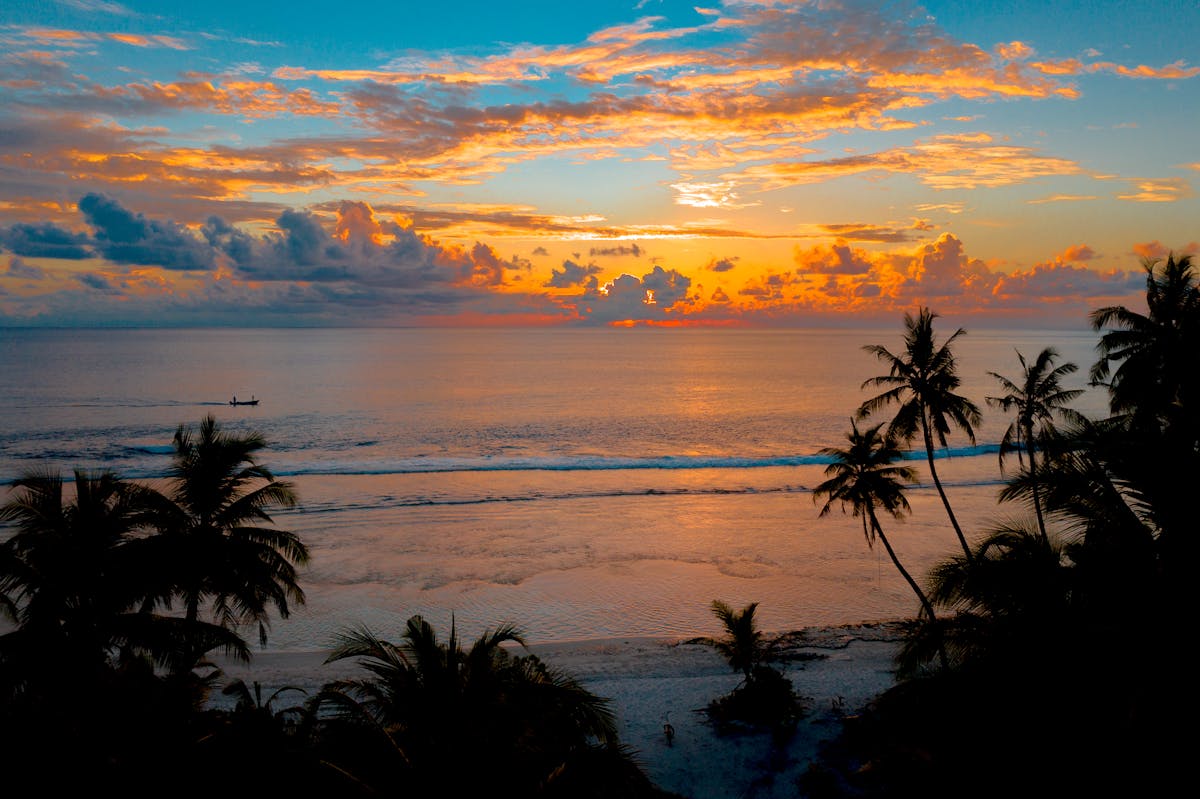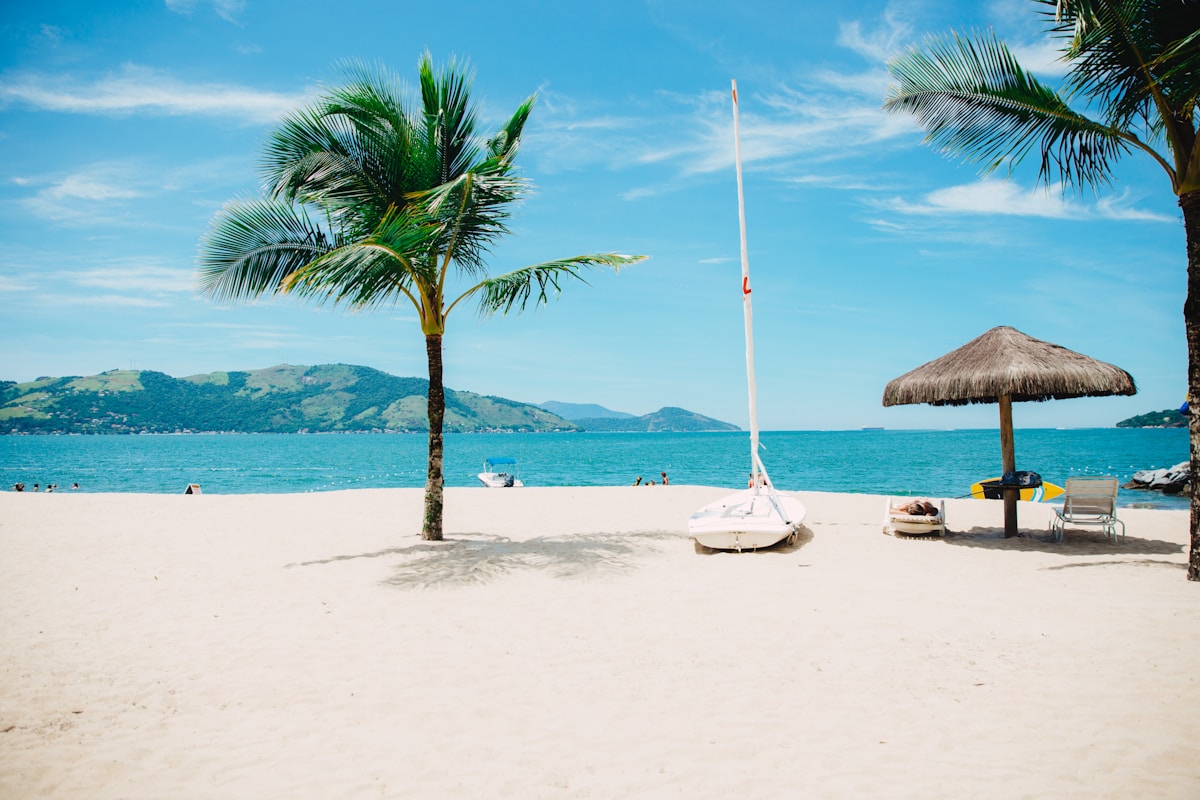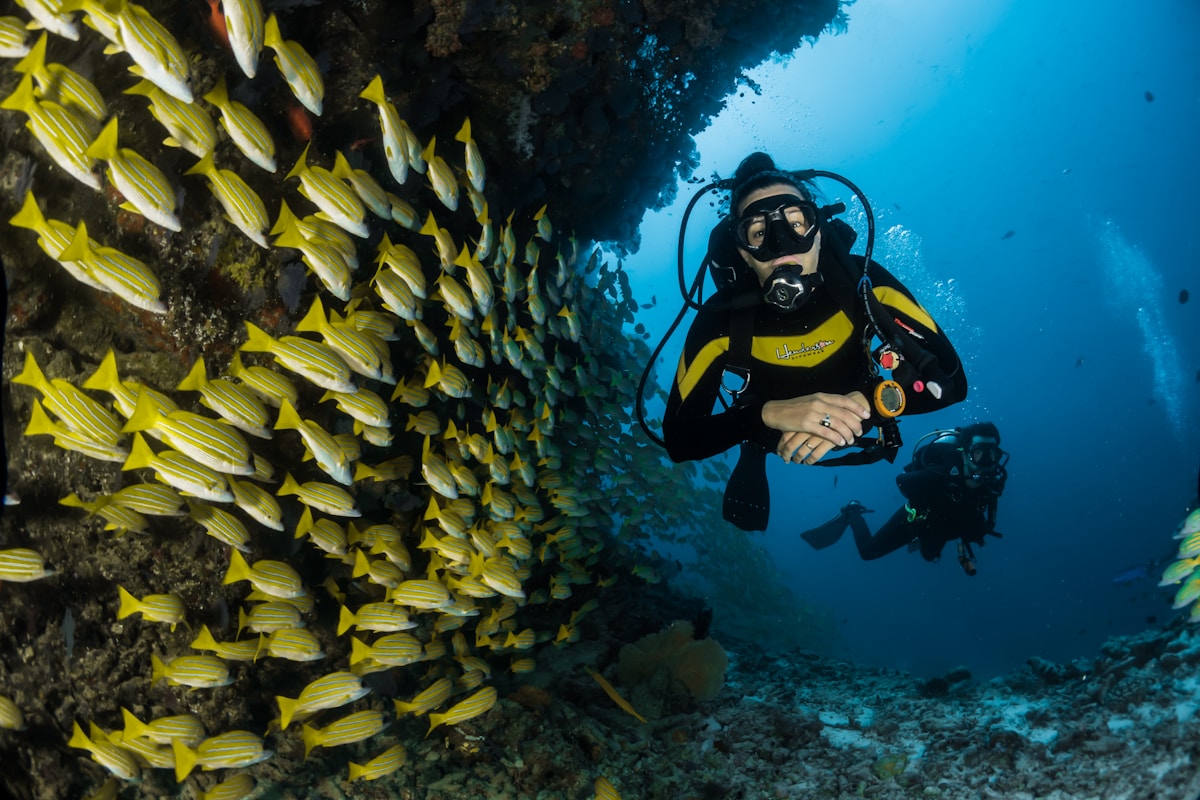Why I Prefer Sydney Beaches in Winter
Most tourists visit Sydney in summer and fight crowds at Bondi in 35°C heat. Meanwhile, I'm at the beach in July (winter) with a handful of other locals, crystal-clear water, perfect sunshine, and zero wait for a coffee afterward. Sydney winter beaches are one of the city's best-kept secrets.
I've lived in Sydney for twelve years, and I swim year-round. Winter swimming isn't just tolerable – it's genuinely wonderful. The water's not as cold as you think (17-19°C), the beaches are empty, and there's something deeply satisfying about swimming when most people think you're crazy.
For Vietnamese visitors, Sydney winter (June-August) is completely different from Vietnam. It's not tropical winter (which is actually nice) – it's proper cold mornings and evenings. But daytime? Often 18-22°C with brilliant sunshine. Perfect beach weather if you know what to do.
Winter Water Temperatures: The Reality
Sydney winter ocean temperatures:
• June: 18-19°C
• July: 17-18°C (coldest)
• August: 17-19°C
For comparison:
• Summer water: 21-24°C
• Melbourne winter water: 12-14°C (much colder)
• Pool water: Usually heated to 26-28°C
Yes, 17°C is cold initially. The first 30 seconds are brutal. But your body acclimates quickly, and after 2-3 minutes, it feels fine. I'm not being tough – I'm genuinely comfortable after the initial shock.
The secret is knowing how to enter the water (don't stand waist-deep shivering – dive straight in and swim), and not staying in too long (10-20 minutes is plenty).
Why Winter Swimming Is Actually Better
Empty Beaches
In summer, popular beaches have thousands of people. In winter, you might share the beach with 10-20 people max. You get space, peace, and that feeling of having the ocean to yourself.
I swim at Bronte most winter mornings. There's maybe 15 other swimmers – all regulars I know by name. It's a community, not a crowd.
Crystal Clear Water
Winter water is clearer than summer. Less algae, fewer storms stirring up sand, better visibility. Snorkeling in winter is spectacular – you can see 10-15 meters underwater.
At rock pools like Bronte Baths or Giles Baths, the water is so clear you can count fish. It's beautiful.
No Bluebottles (Jellyfish)
Bluebottles are summer problem (painful stings, nothing dangerous but ruins your swim). Winter has virtually none. You can swim without constantly scanning the water for blue tentacles.
Better Weather for Walking
Winter days are often perfect for coastal walks – 18-20°C, clear skies, low humidity. The Bondi to Bronte walk in winter is more pleasant than summer's 32°C heat and crowds.
Health Benefits
Cold water swimming has proven benefits:
• Boosts immune system
• Improves circulation
• Releases endorphins (natural high)
• Reduces inflammation
• Improves mental health
I get sick less often since starting winter swimming. Science backs this up – regular cold water exposure strengthens immunity.

How to Start Winter Swimming
Start in Autumn
Don't jump into winter swimming in July. Start in March-April when water's still 20-21°C. Let your body adapt gradually as temperatures drop. By July, 17°C will feel manageable.
I started winter swimming this way. Each week, the water was slightly colder, but I barely noticed because the change was gradual.
Start with Rock Pools
Ocean pools like Bronte Baths, Bondi Icebergs, or Dee Why are better for starting than open ocean. They're protected from waves, have ladders for easy exit, and feel less intimidating than diving into surf.
The Entry Technique
Most people fail at winter swimming because they stand waist-deep, shivering, psyching themselves out. Don't do this.
Correct technique:
1. Wade in to waist depth quickly (don't stop)
2. Dunk your head and shoulders (get the shock over with)
3. Immediately start swimming
4. Keep moving for 2-3 minutes
The shock lasts about 60 seconds. After that, your body adapts and it feels fine. Swimming (not standing still) helps your body generate heat.
Don't Stay In Too Long
Winter swimming isn't about endurance. I swim 10-15 minutes max. That's plenty. Staying longer doesn't make you tougher – it just makes you dangerously cold.
Watch for signs of hypothermia:
• Uncontrollable shivering
• Difficulty speaking
• Loss of coordination
• Confusion
If you experience these, get out immediately and warm up.
The Warm-Up Afterward
This is crucial. Bring:
• Large towel or robe
• Warm clothes (multiple layers)
• Hot drink in thermos
• Beanie (you lose heat through head)
I bring a big hooded towel robe, strip off wet swimmers, put on dry underwear and warm clothes immediately, and drink hot coffee. Within 5 minutes, I'm warm again.
Winter Beach Activities Beyond Swimming
Coastal Walks
Winter is perfect for Sydney's famous coastal walks:
• Bondi to Bronte (3km, 45 mins)
• Bronte to Coogee (3km, 45 mins)
• Manly to Spit Bridge (10km, 3-4 hours)
• Coogee to Maroubra (6km, 90 mins)
Winter weather is ideal – cool enough that you're not sweating, warm enough to be comfortable, and clear skies mean spectacular views. I do the Bondi to Coogee walk weekly in winter.
Surfing in Winter
Winter brings the best surf to Sydney. Bigger swells, cleaner conditions, offshore winds. Serious surfers prefer winter.
You need a thicker wetsuit (3/2mm or 4/3mm instead of summer's 2mm), but the waves are worth it. Check the surfing guide for more details.
Beach Running
Winter mornings are perfect for beach runs – cool temperatures, empty beaches, firm sand. I run from Bondi to Bronte and back (6km) most winter mornings. It's spectacular.
Best beaches for running:
• Bondi: 1km length, good sand
• Manly: 1.5km, wide beach
• Cronulla: 2km, longest city beach
• Collaroy/Narrabeen: 3.5km of continuous beach
Beach Cafes
Winter beach cafes are less crowded, no waits, and sitting in sunshine with coffee after a swim is perfect. The beach cafe culture is actually better in winter – more locals, less tourists, better service.
Best Winter Beaches
Bronte Beach: The Winter Swimming Hub
Bronte has the strongest winter swimming community. The Bronte Splashers meet every Sunday at 9am year-round. Everyone's welcoming, all fitness levels, and swimming with a group makes winter swimming easier.
The Bronte Baths (rock pool) is perfect for winter – protected, ladders, community atmosphere. I swim here 3-4 times weekly in winter.
Bondi Icebergs: The Iconic Winter Pool
The Bondi Icebergs Winter Swimming Club has been meeting every Sunday since 1929. To become a member, you must swim every Sunday for five winters. It's hardcore, but the tradition is beautiful.
You don't need to be a member to swim in the pool ($9 entry). Winter swimming here is spectacular – waves crash over the walls, the view is gorgeous, and you're part of Sydney history.
Dee Why Ocean Pool: My Local
Dee Why pool is 50 meters, free, and has a strong community of year-round swimmers. Less touristy than Bondi, more space, and the Northern Beaches winter sun is perfect.
Coogee Rock Pools
Giles Baths and Ross Jones Pool at Coogee are brilliant in winter. Free, beautiful, usually calm, and the water's crystal clear. Good for nervous winter swimmers because the pools are smaller and feel more protected.
Winter Swimming Gear
Essential Equipment
Wetsuit: Not mandatory for ocean pools (most people swim without), but helpful for open ocean. Get 3/2mm or 4/3mm thickness.
Neoprene cap: Optional but helps – you lose significant heat through your head. I don't use one in ocean pools but do for ocean swims.
Gloves and booties: Overkill for Sydney winter (maybe useful in July if you're sensitive to cold). Most locals don't bother.
Goggles: Same as summer. I prefer tinted for winter sunrise swimming.
Big towel/robe: Essential. Get something hooded and large for quick warm-up.
What I Actually Use
Regular swimmers (Speedos/one-piece), normal goggles, and a big hooded towel. That's it. I don't use wetsuit or neoprene cap for ocean pool swimming. For ocean swims, I add a 3/2mm wetsuit.
Winter Beach Safety
Lifeguard patrols: Some beaches reduce winter patrols. Check before swimming. Major beaches (Bondi, Manly, Coogee) are patrolled year-round.
Rip currents: Still dangerous in winter. Read the beach safety guide and swim between flags when they're up.
Cold shock: The first 60 seconds in cold water triggers gasping reflex. Stay calm, control breathing, start swimming.
Know your limits: Start with 5-10 minutes. Build up gradually. Don't try to be tough – hypothermia is real.
Swim with others: Winter swimming alone is riskier. Join groups (Bronte Splashers, Bondi Icebergs) or swim with friends.
The Mental Side of Winter Swimming
The hardest part of winter swimming isn't the water – it's getting out of bed at 6:30am when it's 8°C outside. I've nearly quit a hundred times standing at the beach thinking 'this is insane.'
But I've never regretted a winter swim after doing it. The feeling afterward – endorphin rush, sense of achievement, warm coffee, sunrise light – is incredible. It's worth the brief discomfort.
Tips for motivation:
• Commit to a regular schedule (same days, same times)
• Find swimming buddies (accountability)
• Join a group (Splashers, Icebergs)
• Focus on how you'll feel after (not the cold)
• Remember: the first minute is worst, then it's fine
Winter Beach Events
Midwinter Swim Festival: Various Sydney beaches, usually July. Organized group swims celebrating winter swimming culture.
Icebergs Sunday swims: Every Sunday, year-round. Not a race, just a tradition.
Bronte Splashers: Every Sunday, 9am. Free to join, very welcoming.
Dark Mofo Winter Feast: While mainly Hobart, Sydney has related events celebrating winter culture including swims.
Vietnamese Visitors: Cultural Context
Winter swimming culture doesn't exist in Vietnam. Vietnamese people generally avoid cold water. So the concept of deliberately swimming in 17°C water will seem bizarre.
But Australian beach culture embraces winter swimming as character-building, healthy, and traditional. The Bondi Icebergs have been doing it since 1929. It's genuinely part of Sydney identity.
You don't have to winter swim to enjoy Sydney beaches in winter. But if you try it once, you might understand why locals love it. Start with a quick dip at Bronte Baths on a sunny 18°C winter day. It's less intimidating than it sounds.
Winter Beach Photography
Winter beaches are spectacular for photography. Clear skies, dramatic light, empty beaches, and that perfect 7am golden hour. Check the beach photography guide for specific tips.
Winter sunrise at ocean pools (Icebergs, Bronte, Dee Why) creates stunning shots – steam rising from water, swimmers silhouetted, dramatic skies.
Why Winter Beaches Changed My Life
I started winter swimming reluctantly (friend dragged me). Now it's central to my life. I've met wonderful people through swimming groups. I'm healthier (fewer colds, better fitness). And I've learned that comfort zones are meant to be challenged.
Winter swimming teaches resilience. If you can dive into 17°C ocean at 6:30am in July, you can handle most challenges life throws at you. It's a metaphor, but also literally true.
For Vietnamese visitors: I know winter swimming sounds crazy. But Sydney's winter beaches – even if you don't swim – are beautiful, uncrowded, and worth experiencing. Come in July, walk the Bondi to Bronte path on a sunny 20°C day, and you'll see why winter might be Sydney's best beach season.
Just bring a jacket for early morning and evening. And maybe, just maybe, try a quick dip.






















